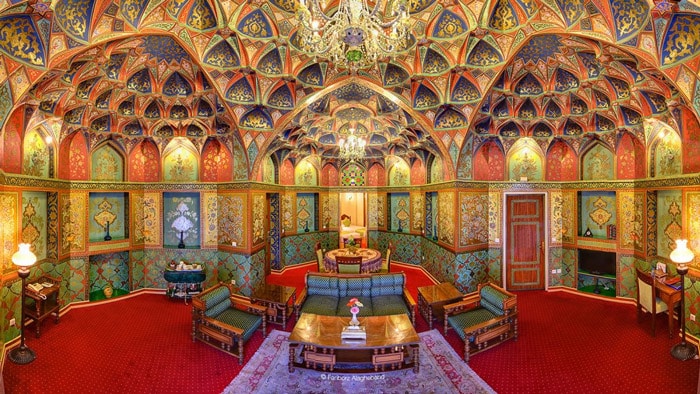Isfahan Grand Bazaar
Exploring Isfahan Grand Bazaar : A Historical Marketplace

Isfahan Bazaar, often called Qeysarieh Bazaar and sometimes Soltani Bazaar, Isfahan Grand Bazaar is one of Iran’s most beautiful bazaars. It’s a perfect example of great Persian architecture and a showcase for all of Iran’s delicate handicrafts.
Built in the 11th century, the bazaar expanded during the reign of the Safavid king Shah Abbas and connects Naqshe Jahan Square to the Friday Mosque, two UNESCO world heritage sites and the most famous highlights of Isfahan.
It’s impossible to imagine visiting the city without wandering in the bazaar’s alleys, losing track of time and space under the high ceilings, considered the world’s longest roofed market.
Contents
A Brief History of Isfahan Grand Bazaar
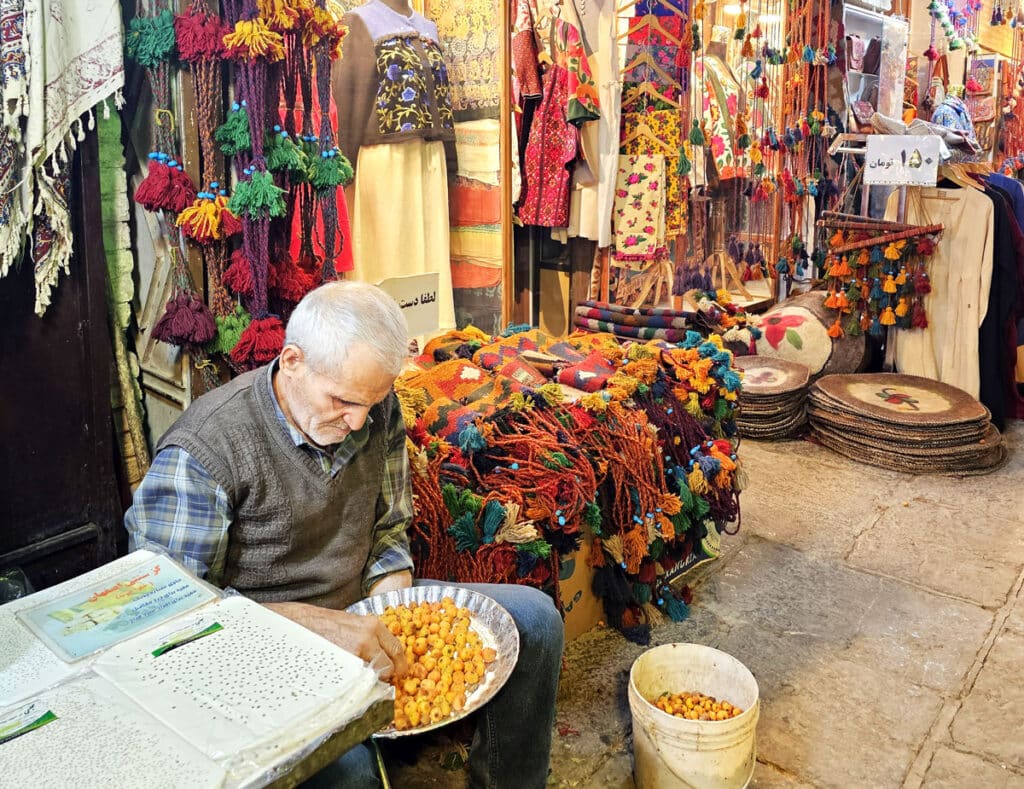
Isfahan Grand Bazaar is one of the oldest and largest bazaars in the Middle East. The bazaar of Isfahan originally built during the Seljuk Era, in the 11th century, located south of the Jameh Mosque, one of Iran’s oldest mosques. Indeed, bazaars usually placed close to the mosque as both occupied a central role in people’s daily lives.
Gradually, various sections added to the bazaar until the reign of the Safavid Dynasty. Indeed, in the 17th century the bazaar grew significantly, taking the shape we can admire today, and becoming one of the most significant trade centers of that era.
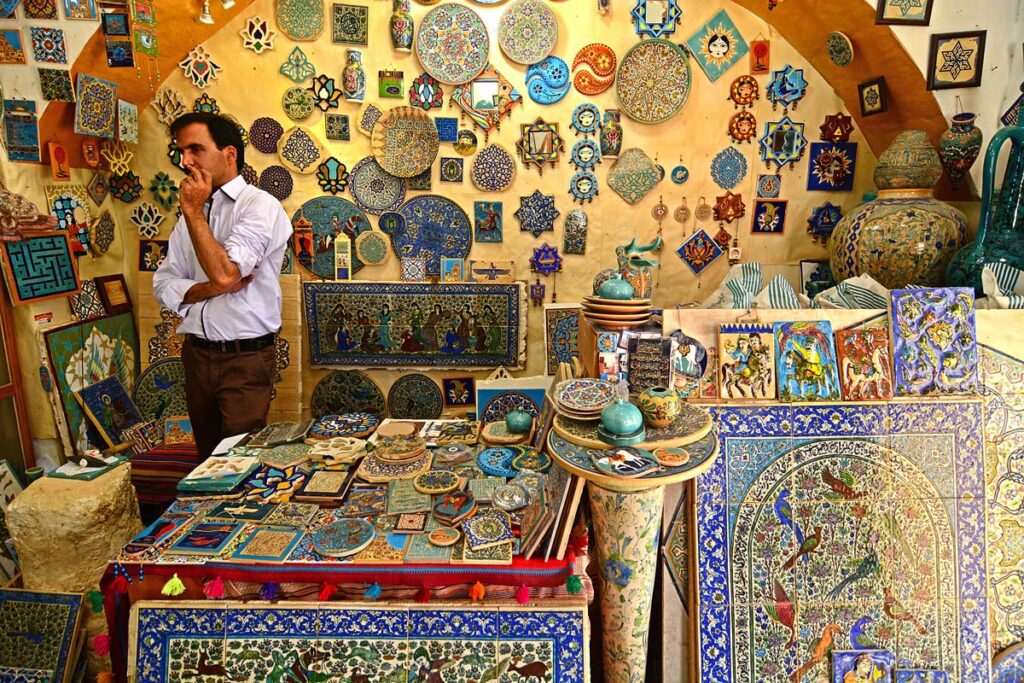
It was during this period (between 1611 and 1629) that was added the bazaar’s main entrance, Qeysarieh Gate, on the northern side of Naqshe Jahan, as a way to connect the bazaar with the square. While Naqshe Jahan would gather places holding political power, the bazaar played an important role as well as it contained the economic power. Qeysarieh Gate was made as the junction of both in the Safavid capital.
Architecture of Isfahan Grand Bazaar
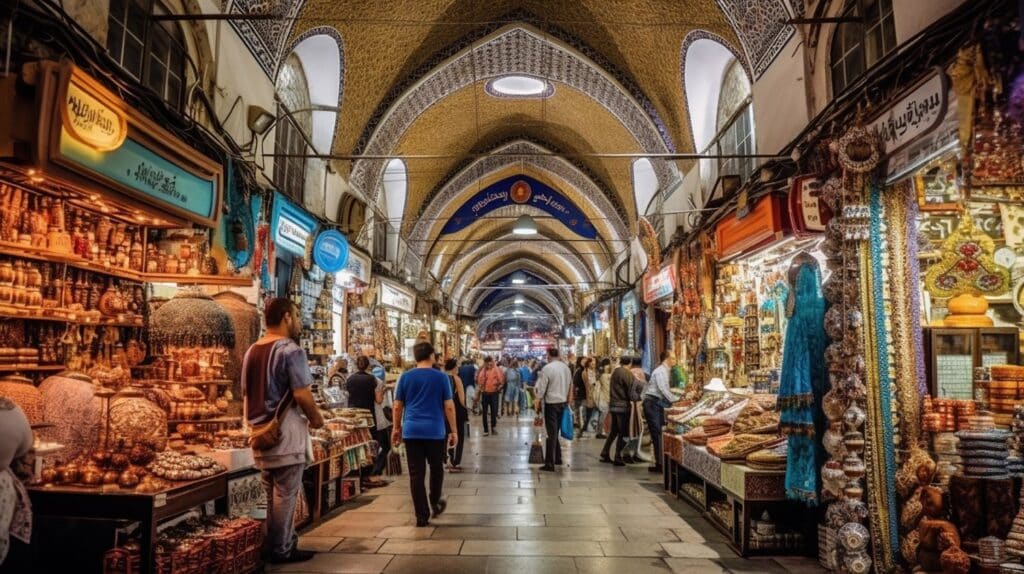
Isfahan Grand Bazaar displays the typical features of Persian bazaar architecture. Yet, it distinguishes itself by being the longest roofed market in the world (not to be mistaken with Tabriz Grand Bazaar, which is the world’s largest roofed market). It’s indeed a vaulted two-kilometers street, with high ceilings and corridors.
Each section of the bazaar is divided into smaller ones, where shops are organized based on what they sell (carpets, spices, metalwork, etc). The intersections of these alleys are called “Chahar-su” (literally “four directions”) and have high ceilings with well-decorated brick domes.
Visits and Shopping in Isfahan Grand Bazaar
If shops are the main activities in the bazaar, it also contains schools, mosques, and caravanserais, which are now historical buildings. The most famous are Nimavar School, Sadr School, Khayyatha Mosque, Zolfaghar Mosque, Shishe Mosque and Jarchi Mosque.
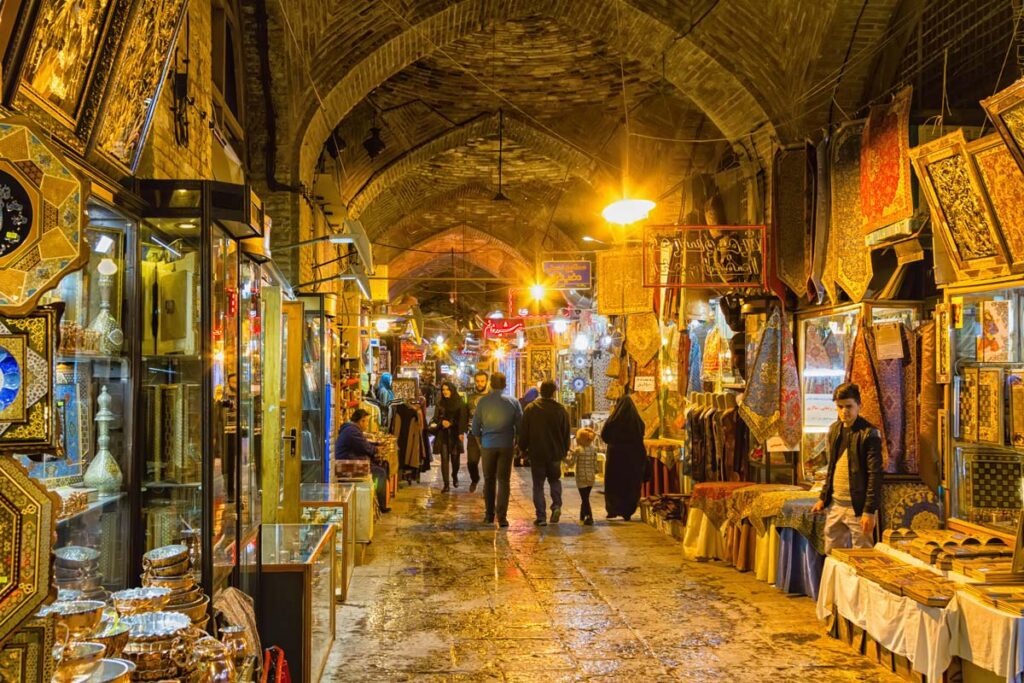
Timcheh Malek is also one of Isfahan Bazaar’s highlights and known as “sara”. These places are arcaded courtyards, smaller than caravanserais, that were used as marketplaces for merchants of one specific type of goods.
Timcheh of Isfahan Bazaar built during the Qajar Era and is a beautiful two-story building organized around a courtyard.
Another singular location within Isfahan Grand Bazaar is Assar Khaneh Shahi. Built 400 years ago, this place was traditionally used to extract oil from seeds (usually from sesame and cottonseed). It’s now a museum, the Assar Khaneh Sahahi Museum, which explains how this process was done.
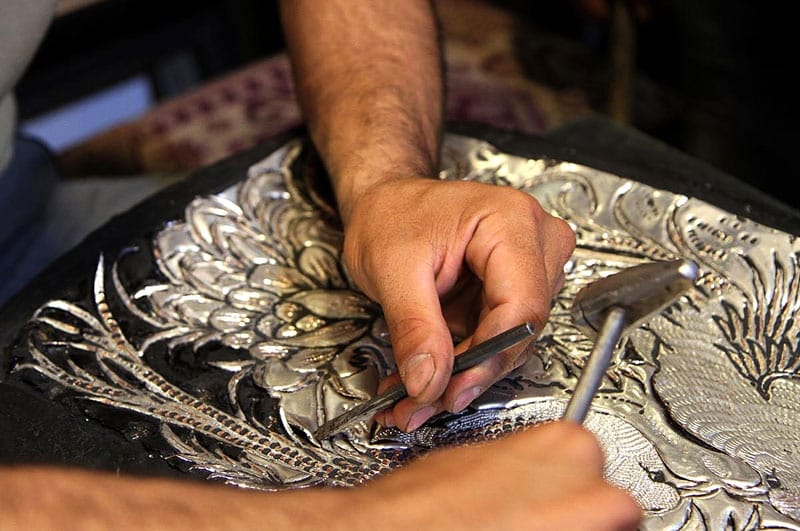
As for shopping, Isfahan Grand Bazaar is probably the best place in Iran to find any kind of traditional Iranian handicraft of the best quality. Isfahan Grand Bazaar is first famous for carpets and kilims (flat tapestry-woven carpets). However, you can find all types of Iranian souvenirs there, such as: Khatam Kari (inlay work), Ghalam Zani (metal engraving), Mina Kari (enamel metal painting), ceramics and pottery, miniatures, fabrics (termeh and ghalamkar), mosaics, and so on…
Access to Isfahan Grand Bazaar
Isfahan Grand Bazaar is located in Isfahan city center. It spreads from the north of Naqshe Jahan Square (Qeysarieh Gate) to the old square near the Friday Mosque. It’s thus pretty easy to access the bazaar whether you’re on foot, metro, bus or taxi. The closest metro station to Isfahan Grand Bazaar is Takhti, about a 20-minute walk from Qeysarieh Gate.
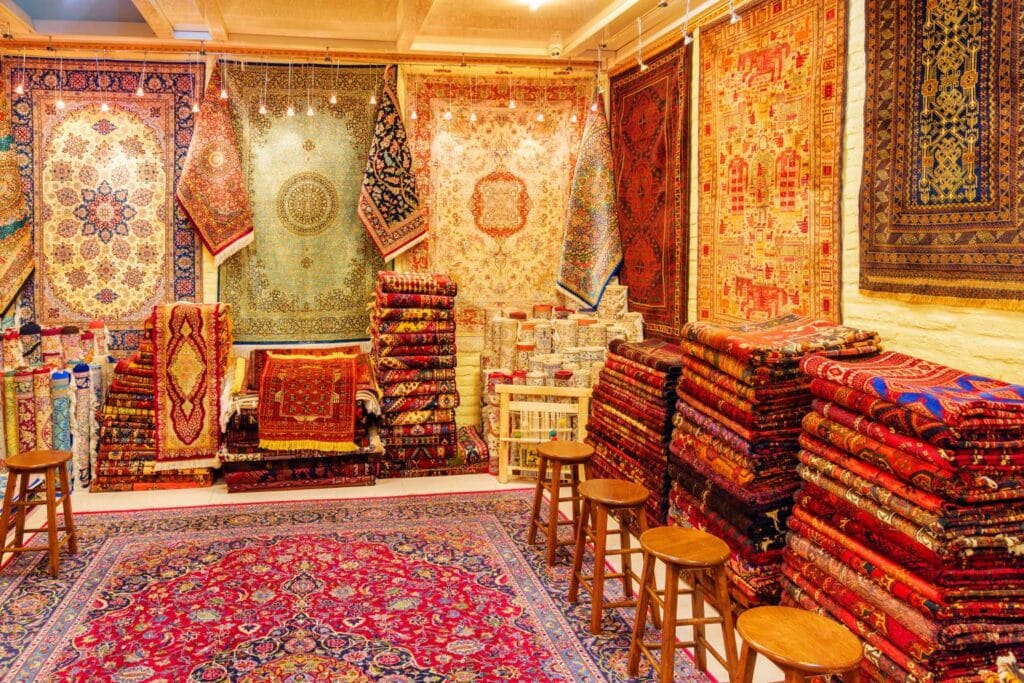
Suggested Visit Time for Isfahan Bazaar
Isfahan Grand Bazaar can be visited for free any time of the day. The busiest time is during the morning and at midday, when most shops are open and customers go from one to the other. The closer we get to sunset, the more shops close their doors. Pay attention to Fridays and National Holidays, during which the bazaar is closed.
Nearby Attractions to Isfahan Grand Bazaar
With Qeysarieh Gate located on Naqshe Jahan Square, the visit of Isfahan Grand Bazaar can perfectly be combined with other important sights such as the Shah Mosque, Lotfollah Mosque, and Ali Qapu Palace. In the northern part, the bazaar is also close to the Friday Mosque, Iran’s oldest mosque and a UNESCO World Heritage Site.
Hotels Near Isfahan Bazaar
While it’s a lively area during the day, the neighborhood of Isfahan Grand Bazaar gets quiet at night, making it a great central location to find a hotel. You’ll have plenty of choices around, such as:
- Ghasr Monshi Hotel
- Abbasi Hotel
- Keryas Hotel
- Isfahan Traditional Hotel
- Parsian Kowsar Hotel
- Aseman Hotel
Nearby Restaurants to Isfahan Bazaar
There are many restaurants inside and around Isfahan Grand Bazaar where you will find traditional Iranian and local food, such as Biryani, a traditional Isfahani meat dish. Here are our recommendations for restaurants and cafes near Isfahan Grand Bazaar:
- Chehel Sotoon Traditional Teahouse
- Azadegan Tea House and Restaurant
- Emarat Namakdan Cafe
- Meydoon Cafe
- Sogoli Cafe and Restaurant
